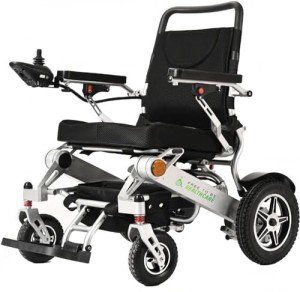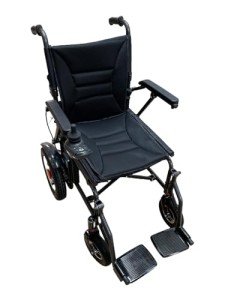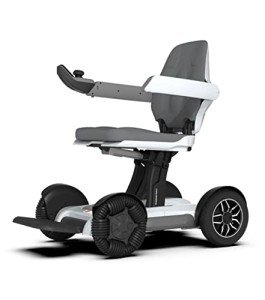In today’s world, mobility can be a challenge for many individuals, particularly those with physical disabilities or injuries. As societies strive to create inclusive environments, technological advancements are meeting these needs by offering innovative solutions. One such innovation is the XJKh All Terrain Power Wheelchair, a vehicle designed to enhance mobility while ensuring comfort and convenience. This guide explores the features, benefits, and considerations associated with the XJKh All Terrain Power Wheelchair.
Understanding the XJKh All Terrain Power Wheelchair
The XJKh All Terrain Power Wheelchair is engineered to navigate a diverse range of terrains, making it a versatile option for users who require reliable mobility in various environments. With robust construction and exceptional durability, this power wheelchair is suitable for outdoor adventures, rough terrains, and urban landscapes alike.
Key Features of the XJKh All Terrain Power Wheelchair
-
All-Terrain Capability:
- Enhanced traction and stability for navigating uneven surfaces, gravel paths, and grass.
- Off-road wheel design allows users to explore nature with ease.
-
Powerful Motor:
- High-torque motor that allows for swift movement while maintaining excellent control.
- Capable of reaching speeds of up to 8 miles per hour.
-
Long Battery Life:
- Equipped with a durable battery capable of lasting up to 25 miles on a single charge.
- Quick charging facilities ensure users can get back on the move faster.
-
Comfortable Seating:
- Ergonomically designed seat offering ample cushioning and support.
- Adjustable armrests and footrests to accommodate different body sizes.
-
User-Friendly Controls:
- Intuitive joystick control for easy navigation.
- Programmable settings for personalized driving experience.
-
Safety Features:
- Equipped with anti-tip technology to prevent falls on slopes.
- Reflective surfaces and lights for visibility in low-light conditions.
Benefits of the XJKh All Terrain Power Wheelchair
Utilizing the XJKh All Terrain Power Wheelchair provides numerous advantages that enhance the quality of life for individuals with mobility impairments. Here are some of the key benefits:
-
Increased Independence: Users can navigate various environments without assistance, promoting autonomy and freedom.
-
Enhanced Quality of Life: By facilitating access to outdoor spaces, individuals can engage in recreational activities and social interactions.
-
Durability and Reliability: Built from high-quality materials, this power wheelchair is designed for long-lasting performance, reducing the need for frequent repairs or replacements.
-
Versatile Use: Suitable for both urban and rural settings, making it an ideal choice for a wide range of users.
-
Improved Health and Well-being: Enhanced mobility can lead to increased physical activity, supporting better overall health.
Considerations When Choosing an All Terrain Power Wheelchair
While the XJKh All Terrain Power Wheelchair offers significant benefits, potential users should consider a few essential factors before making a decision.
-
Weight and Size: Ensure that the wheelchair can accommodate the user's weight. Additionally, consider transportability when traveling.
-
Cost Considerations: Assess your budget and explore options for insurance coverage or financial aid that may be available for purchasing mobility devices.
-
Maintenance Requirements: Regular maintenance is essential to ensure safety and longevity. It’s important to understand the maintenance involved with such a device.
-
Terrain Compatibility: While the XJKh is all-terrain capable, specific terrains may pose challenges. Users should evaluate their regular environments to ensure compatibility.
Frequently Asked Questions (FAQs)
1. How fast can the XJKh All Terrain Power Wheelchair go?
The XJKh can reach speeds of up to 8 miles per hour, providing a swift mode of transportation for users.
2. What is the maximum distance the wheelchair can travel on a single charge?
The XJKh has a maximum range of approximately 25 miles per charge, depending on terrain and user weight.
3. Are there safety features included in the XJKh?
Yes, it comes equipped with anti-tip technology and reflective surfaces to ensure user safety in various conditions.
4. Can the XJKh handle steep hills and uneven ground?
The wheelchair has been designed specifically to navigate uneven surfaces and can handle moderate inclines, making it suitable for outdoor adventures.
5. How do I maintain the XJKh All Terrain Power Wheelchair?
Regular maintenance includes checking tire pressure, cleaning the battery terminals, and ensuring the motor is free of debris. It’s advisable to refer to the manufacturer’s guidelines for detailed maintenance instructions.
The XJKh All Terrain Power Wheelchair represents a significant step toward enhancing mobility and independence for individuals facing physical challenges. Its robust design, user-friendly controls, and all-terrain capabilities allow users to explore the world with confidence. By considering the features, benefits, and maintenance needs, individuals seeking a reliable and versatile mobility solution can make informed decisions. The XJKh not only empowers its users but also symbolizes an ongoing commitment to inclusivity and accessibility in today’s society.
Table of Key Features and Specifications
| Feature | Specification |
|---|---|
| Maximum Speed | 8 miles per hour |
| Maximum Range | 25 miles per charge |
| Seating Style | Ergonomically designed |
| Motor Type | High-torque |
| Terrain Compatibility | All-terrain |
| Weight Capacity | Up to 350 lbs |
| Safety Features | Anti-tip technology, reflectors |
In summary, the XJKh All Terrain Power Wheelchair is built not just for mobility but for freedom, contributing to a more inclusive society where everyone can explore and engage with their environment on their own terms.






